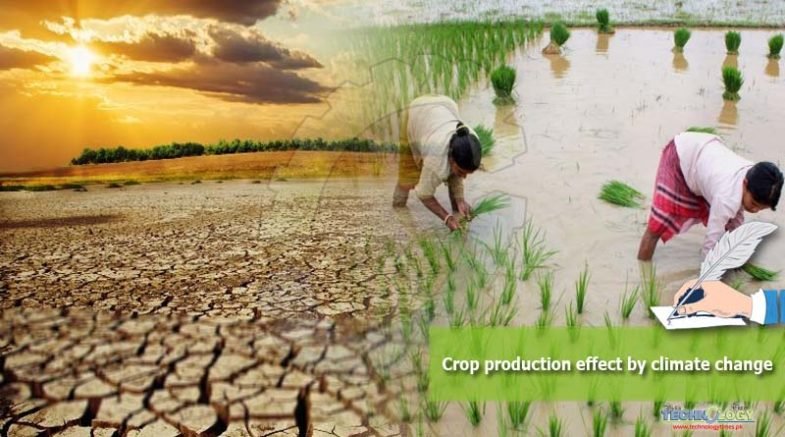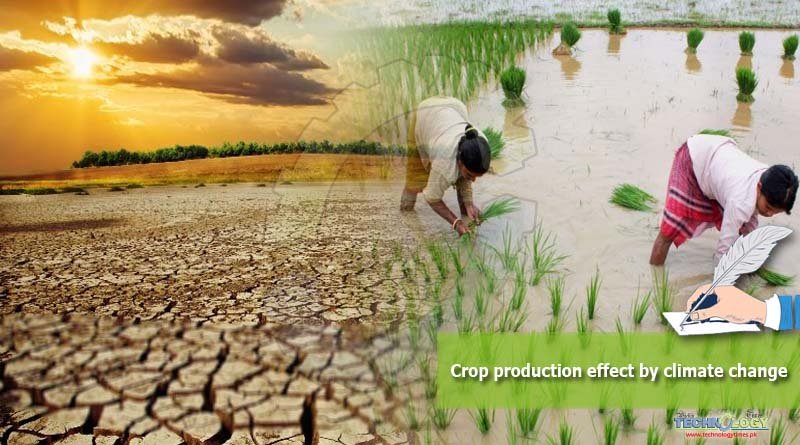Agriculture is an economic system deeply influenced by climatic conditions. Changes in the climate have destroyed the efficiency of Crop production.
 Agriculture is the basis of the Pakistani economy. Contributes to 21% of the country’s GDP. Agricultural societies comprise about 67% of the population legally involved in agriculture. The rural income system depends on agriculture but is described as a generally unsafe activity. In this way, it affects the income of the rural community.
Agriculture is the basis of the Pakistani economy. Contributes to 21% of the country’s GDP. Agricultural societies comprise about 67% of the population legally involved in agriculture. The rural income system depends on agriculture but is described as a generally unsafe activity. In this way, it affects the income of the rural community.
The significant risks presented by a variety of internal and external factors for agricultural businesses are given by the risks of production, promotion, and money, although the important objectives behind the inefficient and unstable situation of farmers include the inability to obtain improved seeds and fertilizers, weed infestation, water scarcity, drought and changes in normal rainfall insufficient research work in the management of the residues of some agricultural crops. (Ashraf et al., 1999; Ashfaq et al., 2003; Ashraf, 2004). Conventional practices are more inefficient than agricultural crops, monoculture, and traditional soil management practices.
Pakistan is located in arid and semi-arid regions and faces the threat of rising temperatures. This expansion of temperature will cause extreme effects. Pakistan is an agricultural country, but it is about to decline and this decline is not the same as ten years ago.
Environmental change is becoming one of the main natural problems that the world faces today. The release of substances that deplete the ozone layer (GHG), such as carbon dioxide (CO2), methane (CH4) and nitrous oxide (N2O), are responsible for changes in the global atmosphere. Environmental changes will cause fluctuations, for example, due to rising temperatures, rising sea levels, changing rainfall and developing climatic zones. Due to changes in the weather, the periods of storms and floods become severe. Global temperatures will rise from 1.8 ° C to 4 ° C, with a normal temperature rise of 2.8 ° C (IPCC, 2007).
In view of the fact that due to deforestation, the extensive use of petroleum products, modern mechanization, the CO2 concentration has increased from 280 ppm to 380 ppm, which is one of the catastrophes of climate change.
Agriculture is an economic system deeply influenced by climatic conditions. Changes in the atmosphere have destroyed the efficiency of crop production making it economically and physically impossible to cope with the atmosphere in terms of homogeneity and changes. Efficiency is influenced by a variety of environmental factors, including the pattern of precipitation, the increase in temperature, changes in sowing and harvesting dates, water availability and soil rationality. Environmental change may not have a major impact, but regional impacts are spreading. Some areas will benefit from environmental changes, while others will be severely affected.
The rise in temperature has radically reduced net profit and furthermore, future estimates of expected net profit will be lacking. The increase in temperature has meant that farmers in arid areas cannot gradually cultivate because the land stock is substantially small. As a result, high temperatures will cause an increase in local demand for the plantation network, largely due to dryland conditions lacking in water. The general extent of the negative effects of temperature is more significant than the constructive result of precipitation in the region.
A 1% increase in temperature has been found to cause a loss of Rs. 4,180 per year net income. Distribution of new agricultural techniques, including new water system technologies, new production cultivation strategies and changes necessary for agricultural adaptation, which will be adequate subsidiaries for changes to arable land requirements in arid regions.
From the latest review and observations, it was concluded that the government can play its role by observing or monitoring climate change and its likely influence on agriculture and thus disseminating the results of this monitoring, in addition to the level playing field for adaptation of wheat producers New crop varieties should be followed together with agricultural conservation practices more suited to a warmer climate in arid regions. New crops with greater tolerance to heat and drought will be preferred, which can help reduce potential damage caused by climatic variations. Policies that increase farmers’ flexibility would also be adopted by farmers to adapt to new circumstances for crop. Eventually, the government could assist in the development of agriculture through irrigation and other development projects. Since the temperature rises in this region and no irrigation system are installed, critical conditions can occur.
Conclusion
Environmental changes have an inverse impact on crop production but our agricultural community does not know it. They have no idea that it could undergo major changes in the next 20-30 years due to rising temperatures. Due to environmental changes, we can lose 30% of our performance and crop production.
